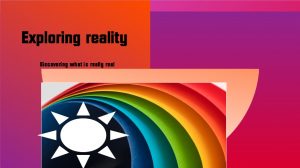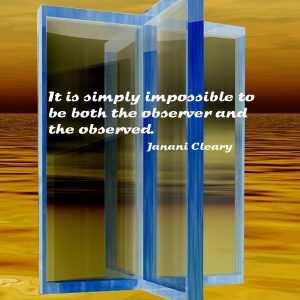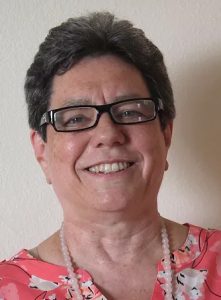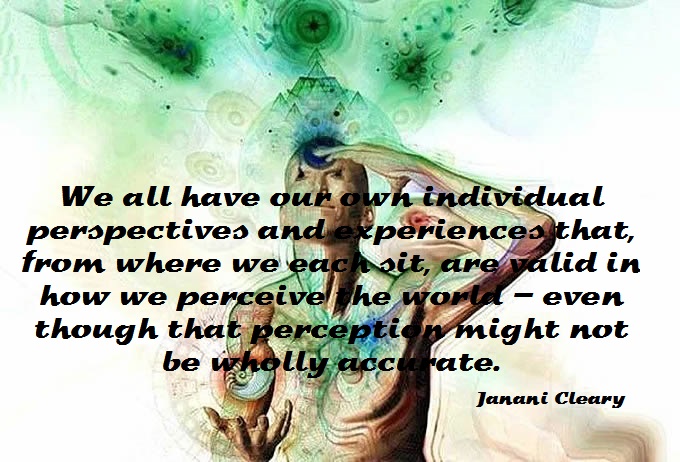Everyone everywhere has their own take on what life is all about and also what they perceive as what is real vs. what is unreal. From a certain perspective nobody can really argue with another person about whether what they perceive is real or not. Why? Because we all have our own individual perspectives and experiences that, from where we each sit, are valid in how we perceive the world – even though that perception might not be wholly accurate. Due to these variations of what is real and unreal, conflicts, delusions, misinterpretations and often grave errors are committed that only cause further problems/challenges/upheavals.
 It stands to reason that there must be some way to know/perceive what is real and unreal so that there is common ground, which would make all of the difference in focusing and choosing more objective approaches, which in turn would save everyone a lot of grief and aggravation. More importantly, it would provide a platform of objectivity that provides the individual with the opportunity to rise above and/or go beyond the unreal and thus become free from all the spin that never really ends, and was and is ultimately never really real in the first place.
It stands to reason that there must be some way to know/perceive what is real and unreal so that there is common ground, which would make all of the difference in focusing and choosing more objective approaches, which in turn would save everyone a lot of grief and aggravation. More importantly, it would provide a platform of objectivity that provides the individual with the opportunity to rise above and/or go beyond the unreal and thus become free from all the spin that never really ends, and was and is ultimately never really real in the first place.
The question then arises, how do we come up with a commonly shared perspective that is logical, reasonable and does not brook any change to its definition much less it pulls the rug out from anyone’s feet.
While there may be many schools of thought out there that may accurately address this challenge, there is a definitive analysis found within the Vedantic tradition that nails it. Since the orders of reality defined therein are based in knowledge one cannot really challenge, dismiss or disagree with how they are defined. Just as in any other study, anything that is knowledge based is irrefutable. For instance, no one can dispute the fact that 2+2=4. Moreover, since these definitions really work, why would anyone want to refute them anyway? Conversely, if someone is feeling ornery, persnickety or otherwise feisty and/or just wants to establish whether these definitions are true or not, they get to and they will then understand how and why they work. As the saying goes: “The proof is in the pudding”, so go for it!
That said, just what are the orders of reality and how are they defined? They are:
1. Paramarthika Satyam – Absolute Reality – That reality that never changes no matter what happens;
2. Vyavaharika Satyam – Transactional Reality – That reality which is always changing; and
3. Pratibhasika Satyam – Subjective Reality – A reality that is based on each individual’s perception of the other two realities.
 With these definitions, it becomes abundantly clear that everything falls within the scope of these three definitions. Therefore, it is evident, that really speaking, there is no such reality that is totally unreal since by definition what is totally unreal would not, could not, exist at all, e.g. the natural born son of a barren woman. Anything that would fall into this category is neither a problem, something to contend with or something to relate to since it is, was and never will be there. This is important to understand so that in terms of defining the realities, the word “unreal” cannot be used since it is not there in the first place. Hence, the three orders of reality must be more clearly described:
With these definitions, it becomes abundantly clear that everything falls within the scope of these three definitions. Therefore, it is evident, that really speaking, there is no such reality that is totally unreal since by definition what is totally unreal would not, could not, exist at all, e.g. the natural born son of a barren woman. Anything that would fall into this category is neither a problem, something to contend with or something to relate to since it is, was and never will be there. This is important to understand so that in terms of defining the realities, the word “unreal” cannot be used since it is not there in the first place. Hence, the three orders of reality must be more clearly described:
1. Absolute Reality – It is the reality that never changes i.e., it is not subject to time = timeless. Is there such a thing and if so, where is it, and what does it look like? It cannot be any “person”, “place”, “thing”, “event” or anything else that is found within the empirical world because, as we are all fully aware, all of these objects exist within that world. In fact, the paradox of the world is that it is the place in which “the only constant is change.”
Based on that fact, the question then is: Does such a really real reality exist? Since it is not available for perception, how do we know it even exists? The answer to this question is a big one but for our purposes in keeping this short and sweet, the easy peasy yet very profound answer is that we are in and of that reality. In fact, we are that reality! How?
We are ever present in all the levels of our day-to-day experiences. We are observers/witnesses of what we see in the world, what we see in our bodies and what we see in our minds. We observe that the world keeps changing, our bodies are in a state of flux and we can barely keep up with our minds!
But we are always, always the observers/witnesses of all of these levels. As such, we never become what we are observing/witnessing. It is simply impossible to be both the observer and the observed.
This then means that since everything in the empirical world is always changing and we as observers are not in or of that world, then it stands to reason – and it is a fact – that we are not changing = timeless = always present. In the West, we use the term “immortal soul”. What is immortal can never become mortal and therefore is ever free from mortality.
Again, while there is so much more to be said about this, another simple fact is that we are ever present – we never go anywhere. There is even a bumper sticker that supports this logic: “Wherever you go, there you are.” Further, we cannot dismiss ourselves because if a person makes the statement that: “I don’t exist.” The very person making such a statement has to exist in order to say it!
So, being ever present a/k/a always there, a/k/a timeless all of which = what is absolutely positively really real! Then, what does knowing this do for us? A lot, a lot, a lot, but basically, it frees us from all sense of limitations because we are timeless. Limitations are always in our face and on our minds because at every turn we are hit with some challenge either in the world (includes other people, places, things, events) or our bodies are reminding us of our imperfections and our minds are ever bouncing all over the place with more problems relating to all of the above!
When the facts are recognized that we can never be limited by time, cut to size or circumscribed, we gain a great huge sense of relief! The pressure is off, the weight of all this stuff is lifted and we are left with a sense of well-being and abiding fullness. At the end of the day, this is where everyone wants to end up no matter who they are, where they are and what they are doing.
 But then, if someone turns around and says, “Well that’s all well and good but I am not exactly feeling that way right about now.” The response would be: “Understood. And the reason you might not be feeling this impact is because you are suffering from a case of mistaken identity wherein you are identifying with the wrong realities.” Therefore, in order to be as you are = really real, you need to shift your identity. You need an attitude adjustment based on knowledge. This leads to taking a closer look at the other two orders of reality.
But then, if someone turns around and says, “Well that’s all well and good but I am not exactly feeling that way right about now.” The response would be: “Understood. And the reason you might not be feeling this impact is because you are suffering from a case of mistaken identity wherein you are identifying with the wrong realities.” Therefore, in order to be as you are = really real, you need to shift your identity. You need an attitude adjustment based on knowledge. This leads to taking a closer look at the other two orders of reality.
Stay tuned for the next installment.
Jane (Janani) Cleary (Copyright – January 2021 – All rights reserved ©) studied under Swami Dayananda Saraswati, a renowned teacher and scholar in Advaita Vedanta and Sanskrit, who conducted an accredited course of study at Sandeepany Sadhanalaya at Mumbai, India, in 1978. Since her return to the United States she has been teaching Vedanta classes in affiliation with Arsha Vidya Gurukulam, Saylorsburg, Pennsylvania, and for the past twenty years has taught the Bhagavad Gita and the Upanishads at the TS Lodge in Deerfield Beach, Florida.
Support Your Spiritual Truths!
Consider A Donation.
Comments welcome at the Connect Page
The Theosophical Society Miami/Deerfield Beach is a 501(c)(3) charitable organization.
Contributions are tax deductible to the fullest extent of the law.
